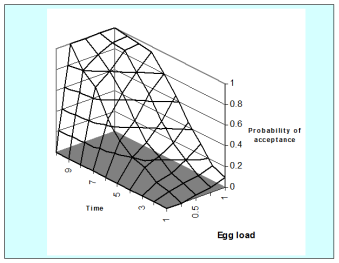Earlier this year, the BBSRC at the stroke of a pen, deprived several strategically important and vulnerable research skills and capabilities areas in biosciences of approximately £9 000 000 per annum by funneling iCASE funding to a number of universities already awash in cash and with little or no interest in vulnerable skill-sets. Now, the BBSRC in a feeble attempt to remedy this seriously misjudged action, has announced their new STARS programme. I quote from their website
http://www.bbsrc.ac.uk/funding/studentships/stars/
“Our STARS programme aims to support the development of strategically important and vulnerable research skills and capabilities in the biosciences. Awards are available to develop postgraduate-level training in areas of significant need for clearly defined academic and industrial sectors”
Reasons for such additional support include, but are not restricted to:
A lack of training and/or capability in specific areas, or a need to up-skill individuals within a specific area
An identified need to attract researchers into the area
A need to build capacity in a new or emerging research area
A need to transfer technical and commercially relevant skills to/from industry
Delivery of training may be achieved by one or more of the following methods:
Research Experience Placements Summer research placements for undergraduate students in the middle years of their studies, to attract them into further research in a strategically important or vulnerable research area
Skills schools in strategically important and vulnerable research areas, including: Development of new skills schools
Expansion of existing institutional/regional activities for national reach
Expansion of existing activities for participation by BBSRC-funded researchers at any level (PhD, postdoctoral researcher, research fellow, research leader)
Development and delivery of training resources through other mechanisms, such as development of e-learning modules or other online resources
Funding
Up to £250k is available per year to support training activities through the STARS programme. There will be three calls per year. Awards are flexible and may be used to support strategic and vulnerable skills for a short, discrete period or for up to three years of recurrent funding.
According to the web site and after an incredulous email by me to the BBSRC, it turns out that this magnificent windfall is expected to fund 30 projects – do the sums and this averages out at just over a princely £8000 each! My colleagues and I felt (and still feel) that this really does not show a serious commitment by the BBSRC to vulnerable research skills and capabilities. Rather, it shows complete disdain and contempt for the areas that they claim to be concerned about;
“We welcome applications for support of any research capability within our remit, but particularly those highlighted in the Review of Vulnerable Skills and Capabilities, published in January 2015 (see downloads) and especially in relation to capabilities within the following areas:
Maths, statistics and computational biology
Physiology and pathology of plants, animals and microbes
Agriculture and food security”
Beggars, however, cannot be choosers and so my colleagues and I duly downloaded an application form and submitted an application to run a one-week summer school in crop protection (entomology, plant pathology, plant nematology and weed science) for three years for 15 undergraduate students per year. Notwithstanding the small sums of money available, the form required inputting a disproportionate amount of information; asked for a business plan and detailed information, concerning in the case of a taught summer school, details of lecture content and delivery, and financial support or other from interested parties and the institution providing the service. In terms of person-hours the delivery of such a course far outweighs the paltry sum of money available; in fact the time taken to put together the application itself, if costed at FEC (full economic costs), would also eat substantially into the monies potentially available. I could borrow more from my bank as a personal loan with considerably more ease, less paperwork and probably with a considerably greater chance of success.
BBSRC you cannot be serious!
Post script
In case anyone wonders why I have chosen to illustrate this post with a photograph of a somewhat sceptical looking elderly gentleman, let me explain. The picture shows my late father, Robert Ikin Leather (1924-2007) who is a perfect example of one of the vulnerable skills set that our proposed summer school would highlight and attempt to remedy. He was a traditional agricultural plant pathologist who could go out into the field, recognise symptoms and diagnose diseases, as well as identifying them in the laboratory and conducting field research. He is no longer with us, as are the majority of people who shared his skills. Plant pathology in the UK is in dire straits as are weed science, plant nematology and to a slightly lesser extent, entomology. To reiterate my earlier point underinvestment in training and research in these areas is not the way to solve the problem.





